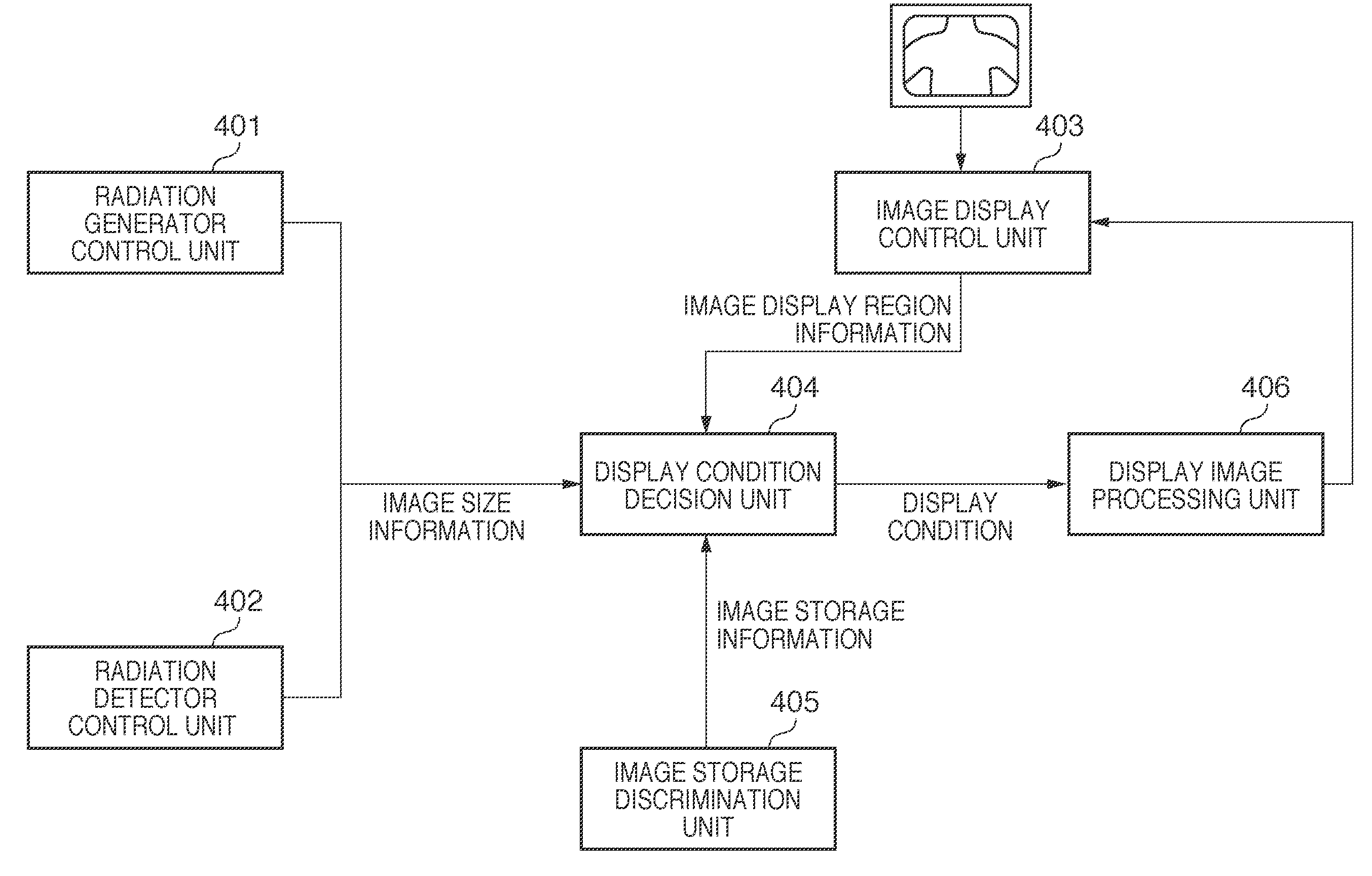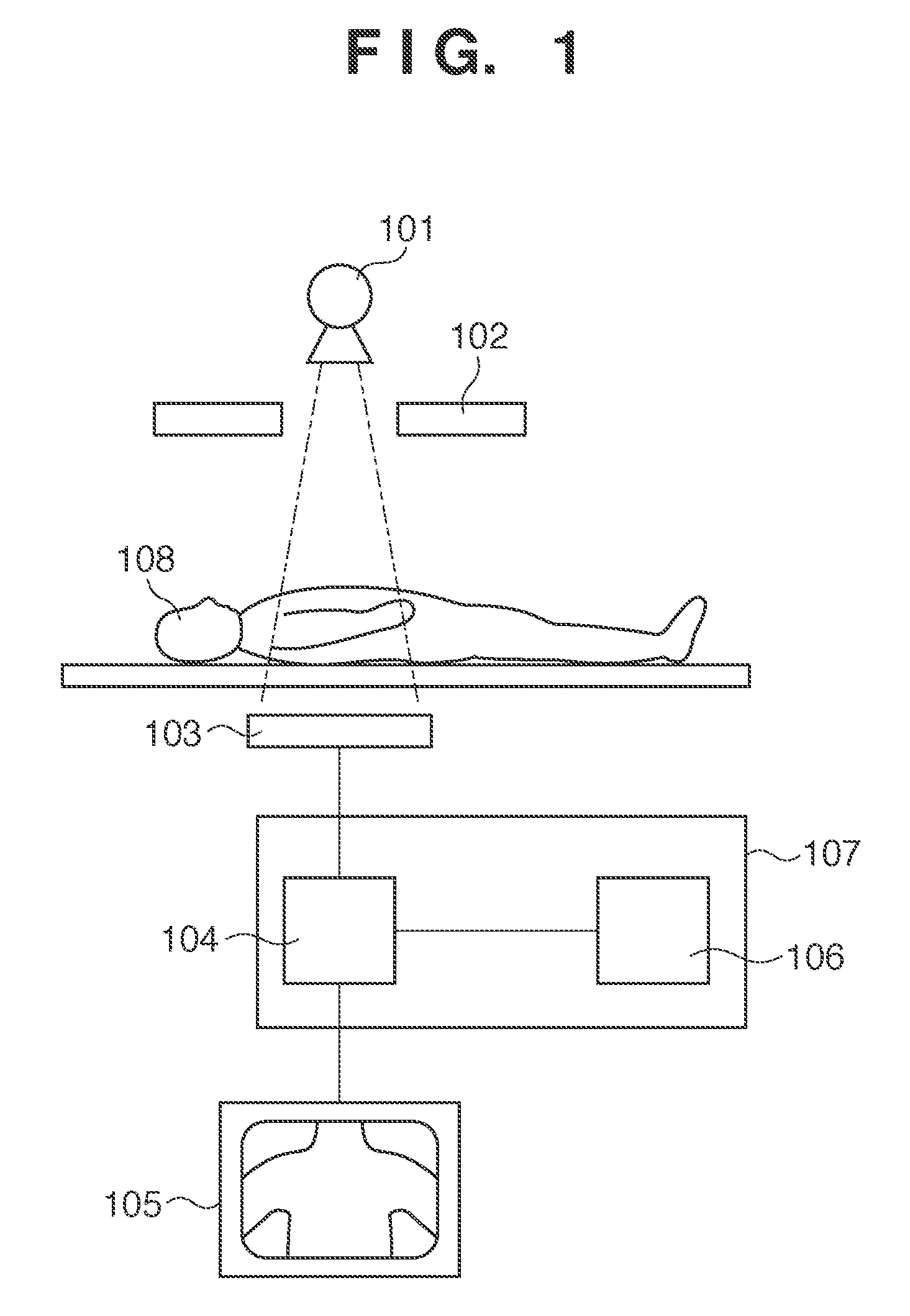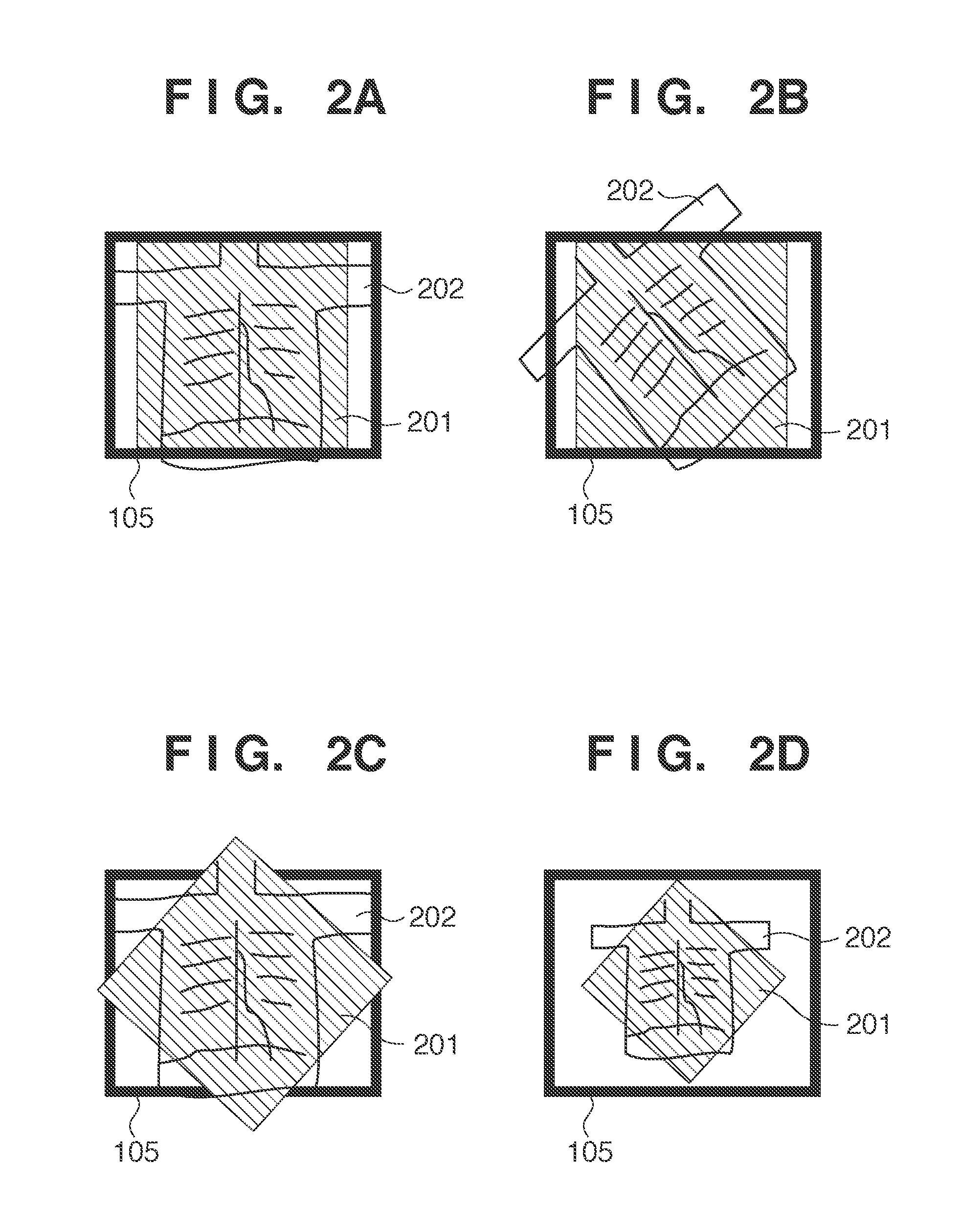Radiation imaging apparatus, radiation imaging method, radiation image processing apparatus, radiation image processing method, and computer-readable storage medium
a radiation imaging and image processing technology, applied in electrical devices, medical science, diagnostics, etc., can solve the problems of difficult to obtain the desired observation image, partly lost image data detected by the quadrangular flat panel detector,
- Summary
- Abstract
- Description
- Claims
- Application Information
AI Technical Summary
Benefits of technology
Problems solved by technology
Method used
Image
Examples
first embodiment
[0026]The schematic arrangement of a radiation imaging apparatus using an FPD according to the present invention will be described with reference to FIG. 1. This apparatus irradiates an object 108 with the radiation emitted from a radiation tube 101 through a radiation stop 102. The apparatus then detects the radiation transmitted through the object 108 through a detector unit 103, and converts the radiation into an image signal. The apparatus is configured to process the converted image signal by using an image processing unit 104 and display the resultant data as an image on a display device 105. The radiation with which the object 108 is irradiated passes through the radiation stop 102 to irradiate only a predetermined range necessary for imaging. The detector unit 103 converts the radiation transmitted through the object 108 into an optical image of visible light using a phosphor in the detector unit 103, and then converts the optical image into an image signal. The image proces...
second embodiment
[0046]In step S505 in the first embodiment, enlargement / reduction conditions are kept the same as those for fit display during radiation irradiation in the mode of storing no radiation image. In contrast, the second embodiment performs enlargement / reduction processing based on user operation within the range of the number of pixels of an image display region, as shown in FIG. 6D. That is, the apparatus can perform operation in a direction to reduce an image from a fit display state at the start of radiation irradiation. It is possible to perform enlargement processing after reduction until fit display. In addition, reduction processing allows panning processing of an image. It is possible to perform panning processing within the range of the number of pixels of an image display region.
third embodiment
[0047]In the first embodiment, the imaging modes are classified into the mode of storing images and the mode of storing no image. In the third embodiment, imaging modes are classified into a mode of storing no moving image, a mode of storing moving images, and a mode of storing still images. Assume that the processing in steps S505 and S506 in the first embodiment is the following processing.
[0048]In step S505 in the first embodiment, rotation processing conditions at the start of radiation irradiation in the mode of storing no image are the same as the final rotation conditions after previous radiation imaging operation (see FIG. 6A). In contrast to this, in the third embodiment, rotation processing conditions at the start of radiation irradiation are the same as the final rotation conditions after the end of radiation imaging in the previous moving image mode.
[0049]In step S506 in the first embodiment, rotation conditions and enlargement / reduction conditions at the start of radiat...
PUM
 Login to View More
Login to View More Abstract
Description
Claims
Application Information
 Login to View More
Login to View More - R&D
- Intellectual Property
- Life Sciences
- Materials
- Tech Scout
- Unparalleled Data Quality
- Higher Quality Content
- 60% Fewer Hallucinations
Browse by: Latest US Patents, China's latest patents, Technical Efficacy Thesaurus, Application Domain, Technology Topic, Popular Technical Reports.
© 2025 PatSnap. All rights reserved.Legal|Privacy policy|Modern Slavery Act Transparency Statement|Sitemap|About US| Contact US: help@patsnap.com



